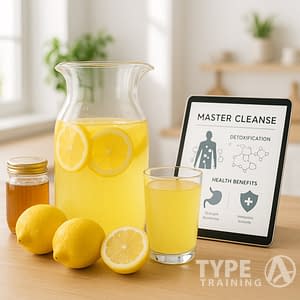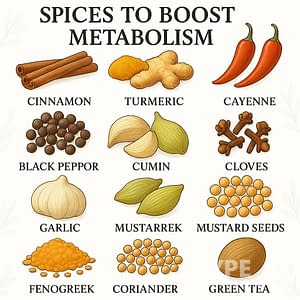Toxic Metals in Rice Brands: Consumer Alert on Contamination

Recent testing shows worrisome levels of toxic heavy metals in rice sold across the United States.
The alarming presence of toxic metals in rice brands calls for heightened consumer awareness.
These findings raise alarms about toxic metals in rice brands that consumers may unknowingly purchase, emphasizing the need for awareness regarding toxic metals in rice brands
Popular posts:
It’s crucial for consumers to understand the toxic metals in rice brands they might be consuming.
.
The issue of Toxic Metals in Rice Brands is increasingly concerning for consumers.
Research highlights the growing concerns over toxic metals in rice brands that are prevalent in the market today.
Understanding toxic metals in rice brands can help consumers make safer choices
Staying informed about toxic metals in rice brands can empower consumers to make safer dietary choices.
.
Researchers checked 145 rice samples from stores nationwide and found arsenic in every single one.
It is essential to remain informed about the toxic metals in rice brands to protect our health
Awareness surrounding toxic metals in rice brands is becoming increasingly important for consumer health.
.
Most samples also had cadmium, lead, and mercury—none of which you want in your dinner.
Key Findings About Heavy Metals in Rice
Awareness of toxic metals in rice brands is critical as it impacts consumer health.
Understanding Toxic Metals in Rice Brands
- Arsenic appeared in 100% of tested rice samples
- Cadmium turned up in nearly all samples
- Lead and mercury showed up at lower levels
- 25% of samples went over federal arsenic limits for infant rice cereal
These metals can do some real damage over time:
-
- Higher cancer risk
- Developmental delays
- Lower IQ in kids
Understanding the risks associated with Toxic Metals in Rice Brands is crucial for making informed dietary choices.
Continuous education on toxic metals in rice brands can significantly impact public health initiatives.
By focusing on toxic metals in rice brands, we can advocate for better food safety standards.
- Build-up in body tissues
Rice Varieties and Their Metal Content
Choosing brands that minimize toxic metals in rice brands is a proactive step for health-conscious consumers
Choosing rice brands that minimize toxic metals in rice brands is essential for health-conscious consumers.
.
Different types of rice come with different contamination risks.
It’s worth paying attention to these differences when you shop:
| Rice Type | Heavy Metal Profile |
|---|---|
| Brown rice (Southeast US) | Highest overall levels of heavy metals |
| White rice (Southeast US) | Higher arsenic than California-grown rice |
| Thai jasmine rice | Lower heavy metal levels |
| Indian basmati rice | Lower arsenic but higher cadmium levels |
| California-grown rice | Generally lower heavy metal levels |
| Arborio rice (Italy) | Higher cadmium levels |
Brown rice almost always has higher contamination than white rice, especially if it’s from the southeastern U.S.
That’s a bit of a shocker if you’ve always thought brown rice was the “healthy” choice.
Regional Differences
Where rice grows makes a huge difference.
Rice from certain regions contains way more of these harmful substances:
- Southeast US-grown rice has the highest average arsenic levels
- California-grown rice usually has less heavy metal content
- Thai jasmine and Indian basmati tend to have less arsenic
- Italian arborio rice often has more cadmium
Soil makes all the difference—plants soak up whatever’s there, good or bad.
Health Implications
Long-term exposure to these heavy metals causes serious health risks.
The World Health Organization warns that constant arsenic exposure can cause cancer and skin problems, and kids are at even greater risk.
The FDA set limits for arsenic in infant rice cereal, but there aren’t any for regular rice products—even though kids eat those, too.
Steps You Can Take to Reduce Exposure
Reducing exposure to toxic metals in rice brands involves smarter purchasing decisions
Families should consider the potential risks associated with toxic metals in rice brands when shopping.
.
You can actually do a few things to lower your exposure to heavy metals in rice.
Cooking methods:
- Use lots of water—6 to 10 cups for every cup of rice
- Drain and rinse rice well after cooking
- Try soaking rice overnight before cooking
Smart shopping choices:
-
- Pick California-grown rice if you can
- Go for Thai jasmine or Indian basmati
Opting for rice types with lower levels of toxic metals in rice brands can significantly reduce risks
Being proactive about toxic metals in rice brands can lead to healthier lifestyle choices.
.
- Consider white rice instead of brown for lower metal content
Mix up your grains:
- Add quinoa, farro, or barley to your meals
- These usually have about 69% less heavy metal than rice
Current Regulatory Status
The FDA’s “Closer to Zero” initiative aims to cut heavy metals in food, especially baby food.
Health advocates want stricter rules for all rice products, not just those for infants.
The USA Rice Federation says American-grown rice has the lowest inorganic arsenic worldwide and that trace amounts aren’t a public health threat, but they’re still working with the FDA on safety standards.
Most Affected Products
Some rice products deserve extra caution:
Be cautious of rice products that may contain toxic metals in rice brands
Awareness of the toxic metals in rice brands can aid in making safer food selections.
.
- Infant rice cereal: Often the first solid food for babies
- Brown rice: Higher levels since metals build up in the bran
- Rice milk: Can be a big source of arsenic
- Rice-based snacks: Sneaky sources of exposure
If you have young kids, it’s worth being extra careful with rice, since developing brains are more sensitive to these toxins.
Rice vs. Ancient Grains: Health and Safety Comparison

If you compare rice to ancient grains, the differences in heavy metal content are pretty clear.
Greater knowledge of toxic metals in rice brands is vital for protecting consumer health.
Comparing heavy metal levels in rice versus ancient grains highlights the importance of knowing toxic metals in rice brands.
Researchers tested 145 rice samples and 66 samples of grains like quinoa, couscous, barley, and farro for arsenic, lead, cadmium, and mercury.
The results aren’t great for rice fans.
Testing found that one in four rice brands has too much arsenic, but ancient grains almost always had much lower levels of these toxins.
That’s a big deal if you care about your family’s health.
Here’s a quick comparison:
| Grain Type | Arsenic Levels | Cadmium Levels | Overall Safety Rating |
|---|---|---|---|
| White Rice | High | Moderate | Concerning |
| Brown Rice | Very High | High | Most Concerning |
| Quinoa | Low | Very Low | Recommended |
| Barley | Low | Low | Recommended |
| Farro | Very Low | Low | Highly Recommended |
Why try ancient grains instead?
- More protein than most rice
- Extra fiber for your gut
- Lower glycemic index so your blood sugar stays steadier
- More vitamins and minerals overall
Rice from the U.S., India, Thailand, and Italy all showed different contamination levels. Some regions just seem to have cleaner rice than others.
If you’ve got kids, this stuff matters even more. Healthy Babies, Bright Futures points out that infants and young children are especially vulnerable because their bodies are still developing.
Rice Types and Growing Locations Impact Metal Content
The kind of rice you buy—and where it’s grown—really changes how much heavy metal ends up in your meal.
Brown rice from the southeastern U.S. comes out worst for toxic metals. Even rice labeled “grown in the USA” sometimes has surprisingly high levels.
Lab results showed US-grown brown rice had about 151 parts per billion of heavy metals—higher than many other varieties.
Across all rice samples, heavy metal levels ranged from:
- 63 to 188 ppb on average
- Some samples hit 240 ppb
Most common heavy metals in rice:
- Arsenic (highest)
- Cadmium
- Lead
- Mercury
Researchers looked at 145 popular brands, including Trader Joe’s, Ben’s, and Goya.
Brands with high levels of toxic metals in rice brands should be approached with caution.
So next time you’re picking rice, it might be worth checking where it’s from—or even swapping in another grain sometimes.
Ways to Reduce Your Heavy Metal Exposure from Rice
How you cook rice makes a big difference when it comes to arsenic and other heavy metals. Try cooking rice like pasta—use 6 to 10 cups of water for each cup of rice.
After the rice cooks, drain off the extra water before you eat it. This simple step can wash away more contaminants than you might think.
Try these preparation techniques:
- Rinse rice thoroughly before cooking
- Soak rice overnight to release more toxins
- Use the “pasta method” with extra water
- Drain and rinse after cooking
Switching up your grains is honestly a smart move. Quinoa, millet, barley, and couscous usually have less heavy metal content and add some variety to your meals.
Consider these rice alternatives:
-
- Quinoa
- Millet
Switching to grains with lower toxic metals in rice brands is a healthier option.
- Barley
- Couscous
- Farro
Different rice types come with different risks. White rice from California, sushi rice, Thai jasmine, and Indian basmati usually have lower heavy metal levels than other kinds.
Understanding which rice varieties have toxic metals in rice brands can guide better dietary choices
Regularly checking the levels of toxic metals in rice brands can prevent health risks.
.
Brown rice has more arsenic than white rice, since arsenic hangs out in the outer bran layer. That layer gets removed when making white rice.
Rice varieties with typically lower heavy metal content:
- California white rice
- Thai jasmine rice
- Indian basmati rice
- Sushi rice
Parents should be vigilant about the toxic metals in rice brands that their children consume.








